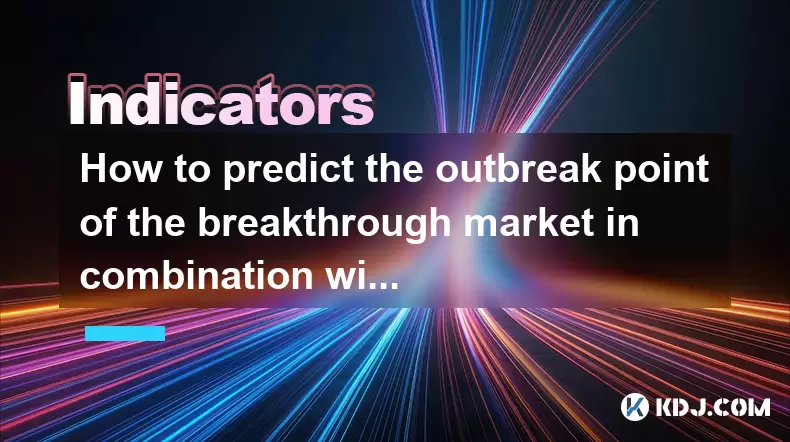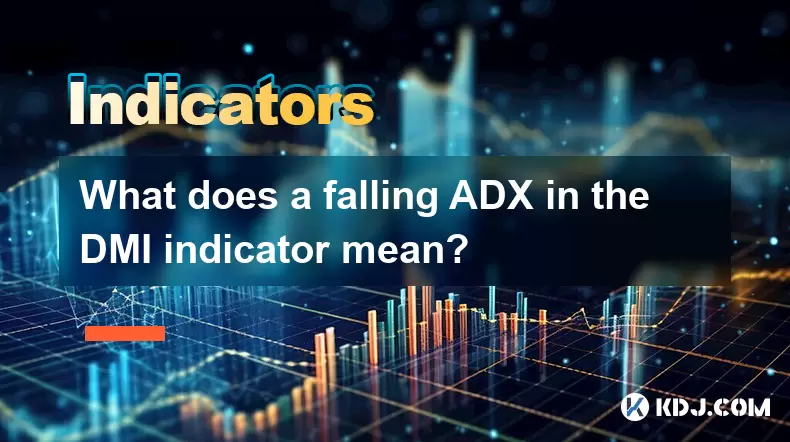-
 Bitcoin
Bitcoin $116700
0.24% -
 Ethereum
Ethereum $3973
4.34% -
 XRP
XRP $3.283
7.68% -
 Tether USDt
Tether USDt $1.000
0.01% -
 BNB
BNB $789.8
2.27% -
 Solana
Solana $176.2
3.31% -
 USDC
USDC $0.9999
0.00% -
 Dogecoin
Dogecoin $0.2238
5.14% -
 TRON
TRON $0.3389
-0.51% -
 Cardano
Cardano $0.7907
4.03% -
 Stellar
Stellar $0.4527
10.02% -
 Hyperliquid
Hyperliquid $41.07
4.27% -
 Sui
Sui $3.794
1.77% -
 Chainlink
Chainlink $19.49
10.40% -
 Bitcoin Cash
Bitcoin Cash $580.9
0.74% -
 Hedera
Hedera $0.2617
4.32% -
 Avalanche
Avalanche $23.41
3.67% -
 Ethena USDe
Ethena USDe $1.001
-0.03% -
 Litecoin
Litecoin $122.4
1.38% -
 Toncoin
Toncoin $3.364
1.49% -
 UNUS SED LEO
UNUS SED LEO $8.988
0.37% -
 Shiba Inu
Shiba Inu $0.00001295
2.82% -
 Uniswap
Uniswap $10.62
5.75% -
 Polkadot
Polkadot $3.922
4.46% -
 Dai
Dai $1.000
0.01% -
 Bitget Token
Bitget Token $4.494
2.15% -
 Monero
Monero $268.0
-1.30% -
 Cronos
Cronos $0.1523
3.68% -
 Pepe
Pepe $0.00001127
4.43% -
 Aave
Aave $285.4
4.85%
How to predict the outbreak point of the breakthrough market in combination with the characteristics of volatility contraction?
To predict cryptocurrency breakouts, traders should identify volatility contraction using Bollinger Bands and ATR, then set entry/exit points at key support/resistance levels.
Jun 01, 2025 at 02:35 pm

The cryptocurrency market is known for its volatility, which can be both a challenge and an opportunity for traders. One of the key strategies for successful trading involves predicting the outbreak point of a breakthrough market, particularly in relation to periods of volatility contraction. This article will explore how to identify these crucial moments by combining an understanding of market volatility and contraction patterns.
Understanding Volatility Contraction in Cryptocurrency Markets
Volatility contraction refers to periods when the price movements of a cryptocurrency become more restrained and less erratic. During these times, the market often experiences a lull, with smaller price swings and lower trading volumes. This contraction is significant because it often precedes a major breakout, where the price can move significantly in one direction.
To identify volatility contraction, traders typically look at several technical indicators. The Bollinger Bands, for instance, are widely used. When the bands narrow, it indicates a contraction in volatility. Similarly, the Average True Range (ATR) can show a decrease in market volatility when its value drops over time. By monitoring these indicators, traders can anticipate potential breakouts.
Identifying Key Levels for Breakout Points
Once a period of volatility contraction is identified, the next step is to determine the key levels at which a breakout might occur. These levels are often found at significant support and resistance points on the price chart. Support levels are where the price tends to find a floor and bounce back up, while resistance levels are where the price tends to hit a ceiling and fall back down.
To pinpoint these levels, traders can use a variety of tools. Fibonacci retracement levels, for example, help identify potential reversal points based on historical price movements. Additionally, trend lines and moving averages can be drawn to highlight areas where the price has historically reacted. By combining these tools, traders can better predict where a breakout might occur following a period of volatility contraction.
Analyzing Market Sentiment and Volume
Market sentiment and trading volume are critical factors in predicting the outbreak point of a breakthrough market. High trading volumes can confirm a breakout, while low volumes might indicate a false breakout. To gauge market sentiment, traders often look at social media platforms, news outlets, and sentiment analysis tools that aggregate data from various sources.
Volume indicators, such as the Volume Weighted Average Price (VWAP), can also provide insights into the strength of a breakout. If the price breaks out on high volume, it is more likely to be sustained. Conversely, if the breakout occurs on low volume, it may be a false signal, and the price could revert to its previous range.
Using Technical Patterns to Predict Breakouts
Technical patterns are another essential tool for predicting breakouts in the cryptocurrency market. Patterns such as the bullish flag, bullish pennant, and ascending triangle can indicate potential upward breakouts, while bearish patterns like the bearish flag, bearish pennant, and descending triangle can signal downward breakouts.
To use these patterns effectively, traders should look for them during periods of volatility contraction. For instance, if a bullish flag pattern forms after a period of low volatility, it could signal an imminent upward breakout. By recognizing these patterns and understanding their implications, traders can position themselves to take advantage of the breakout.
Implementing a Trading Strategy Based on Volatility Contraction
Once traders have identified a period of volatility contraction and potential breakout points, they need to implement a trading strategy to capitalize on the expected move. A common approach is to set entry and exit points based on the identified breakout levels.
Here is a detailed guide on how to set up a trading strategy:
- Identify the Volatility Contraction: Use indicators like Bollinger Bands and ATR to confirm a period of low volatility.
- Determine Key Levels: Use tools like Fibonacci retracement, trend lines, and moving averages to find potential support and resistance levels.
- Analyze Market Sentiment and Volume: Monitor social media, news, and volume indicators to gauge the strength of the market.
- Recognize Technical Patterns: Look for patterns such as bullish or bearish flags, pennants, and triangles during the contraction phase.
- Set Entry and Exit Points: Place buy or sell orders at the identified breakout levels, and set stop-loss orders to manage risk.
- Monitor the Trade: Keep an eye on the trade to ensure it moves in the expected direction and adjust stop-loss orders as necessary.
By following these steps, traders can increase their chances of successfully predicting and profiting from a breakout following a period of volatility contraction.
Frequently Asked Questions
Q: Can volatility contraction be predicted in advance?
A: While it's challenging to predict volatility contraction with absolute certainty, traders can use historical data and technical indicators to identify patterns that often precede these periods. For instance, a prolonged period of high volatility might suggest an upcoming contraction. Monitoring these patterns can help traders prepare for potential breakouts.
Q: How long does a period of volatility contraction typically last?
A: The duration of volatility contraction can vary widely depending on market conditions. In some cases, it might last a few days, while in others, it could extend over several weeks. Traders should use technical indicators to monitor the contraction's progress and be ready to act when a breakout appears imminent.
Q: Are there any specific cryptocurrencies that are more prone to volatility contraction?
A: Volatility contraction can occur in any cryptocurrency, but it is more commonly observed in those with higher trading volumes and liquidity, such as Bitcoin and Ethereum. These cryptocurrencies often experience more significant price movements, leading to more pronounced periods of contraction and subsequent breakouts.
Q: How can traders differentiate between a true breakout and a false breakout?
A: Differentiating between a true and false breakout involves analyzing several factors. A true breakout is typically accompanied by high trading volume and a clear move beyond the identified breakout level. In contrast, a false breakout often occurs on low volume and may quickly reverse back into the previous range. Traders should also consider market sentiment and the presence of technical patterns to confirm the breakout's validity.
Disclaimer:info@kdj.com
The information provided is not trading advice. kdj.com does not assume any responsibility for any investments made based on the information provided in this article. Cryptocurrencies are highly volatile and it is highly recommended that you invest with caution after thorough research!
If you believe that the content used on this website infringes your copyright, please contact us immediately (info@kdj.com) and we will delete it promptly.
- Roman Storm, Funding Effort, and the Looming Defense Retrial: A New York Minute on the Tornado Cash Case
- 2025-08-09 02:50:14
- Crypto's Wild Ride: XRP, Dogecoin, and the Altcoin Surge You Can't Ignore
- 2025-08-09 02:50:14
- Elon Musk, Bitcoin, and the Enduring Power of Approval: A Crypto Love Story?
- 2025-08-09 03:50:15
- Ruvi AI: The Next Big Thing After Ripple on CoinMarketCap?
- 2025-08-09 03:50:15
- Floki Price Surges: Elliott Wave and Fibonacci Setups Point to Potential Gains!
- 2025-08-09 02:30:16
- Pepe Price, RTX (Remittix?) & the $10K ETH Dream: NYC Crypto Chatter
- 2025-08-09 02:30:16
Related knowledge

What does it mean when the TRIX indicator suddenly diverges downward after a long period of convergence?
Aug 09,2025 at 12:56am
Understanding the TRIX Indicator in Cryptocurrency TradingThe TRIX indicator, or Triple Exponential Average, is a momentum oscillator used in technica...

Why is the rise limited after a MACD bottoming divergence?
Aug 09,2025 at 12:07am
Understanding MACD Bottoming Divergence in Cryptocurrency TradingThe MACD (Moving Average Convergence Divergence) is a widely used technical indicator...

What does it mean when the OBV continues to rise but the price is trading sideways?
Aug 08,2025 at 10:35pm
Understanding On-Balance Volume (OBV)On-Balance Volume (OBV) is a technical indicator that uses volume flow to predict changes in stock or cryptocurre...

What does a falling ADX in the DMI indicator mean?
Aug 09,2025 at 03:16am
Understanding the ADX and DMI Indicator FrameworkThe DMI (Directional Movement Index) is a technical analysis tool developed by J. Welles Wilder to id...

What does a double top pattern on the Williams oscillator mean?
Aug 09,2025 at 02:36am
Understanding the Williams %R OscillatorThe Williams %R oscillator is a momentum indicator developed by Larry Williams to identify overbought and over...

What is a nonce and how is it used in Proof of Work?
Aug 04,2025 at 11:50pm
Understanding the Concept of a Nonce in CryptographyA nonce is a number used only once in cryptographic communication. The term 'nonce' is derived fro...

What does it mean when the TRIX indicator suddenly diverges downward after a long period of convergence?
Aug 09,2025 at 12:56am
Understanding the TRIX Indicator in Cryptocurrency TradingThe TRIX indicator, or Triple Exponential Average, is a momentum oscillator used in technica...

Why is the rise limited after a MACD bottoming divergence?
Aug 09,2025 at 12:07am
Understanding MACD Bottoming Divergence in Cryptocurrency TradingThe MACD (Moving Average Convergence Divergence) is a widely used technical indicator...

What does it mean when the OBV continues to rise but the price is trading sideways?
Aug 08,2025 at 10:35pm
Understanding On-Balance Volume (OBV)On-Balance Volume (OBV) is a technical indicator that uses volume flow to predict changes in stock or cryptocurre...

What does a falling ADX in the DMI indicator mean?
Aug 09,2025 at 03:16am
Understanding the ADX and DMI Indicator FrameworkThe DMI (Directional Movement Index) is a technical analysis tool developed by J. Welles Wilder to id...

What does a double top pattern on the Williams oscillator mean?
Aug 09,2025 at 02:36am
Understanding the Williams %R OscillatorThe Williams %R oscillator is a momentum indicator developed by Larry Williams to identify overbought and over...

What is a nonce and how is it used in Proof of Work?
Aug 04,2025 at 11:50pm
Understanding the Concept of a Nonce in CryptographyA nonce is a number used only once in cryptographic communication. The term 'nonce' is derived fro...
See all articles

























































































